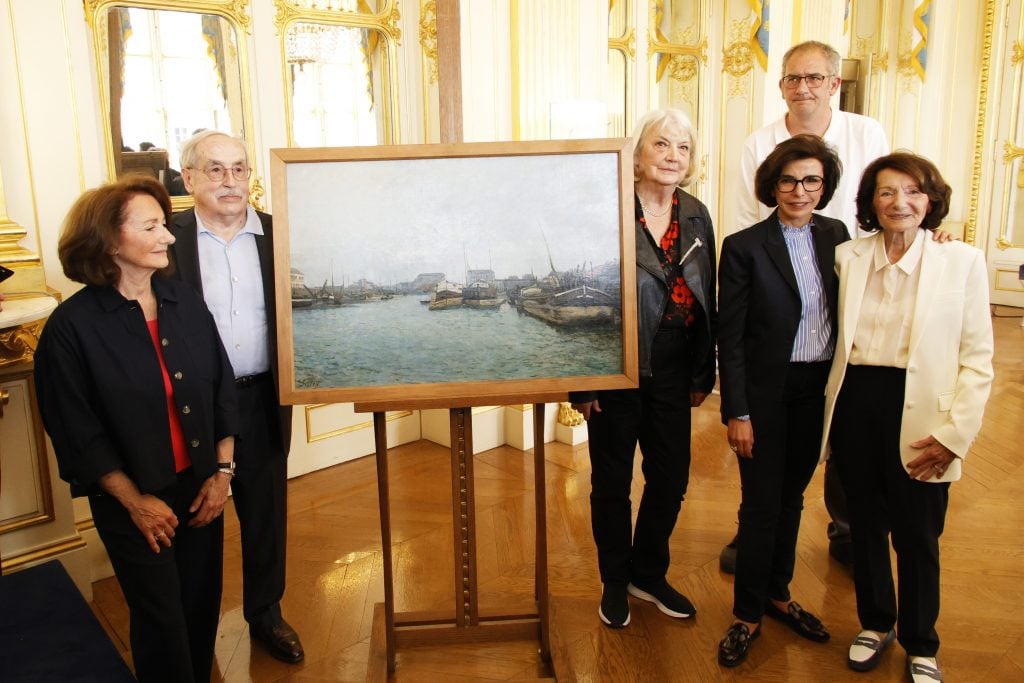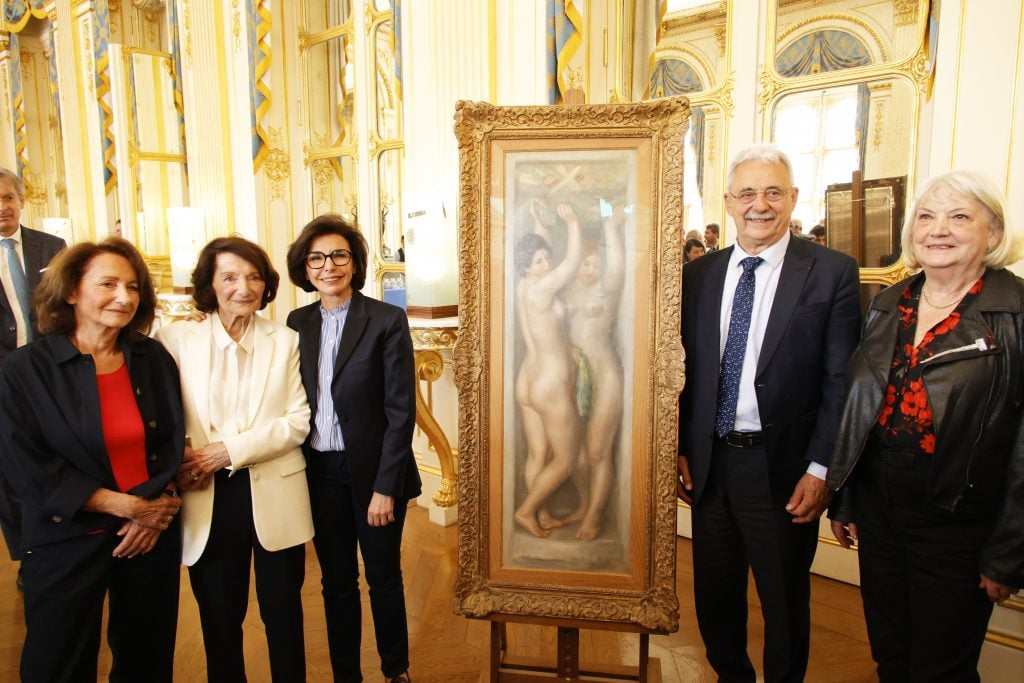Museums & Institutions
Renoir and Sisley Paintings Returned to Heirs of Jewish Art Dealer
France has doubled down on efforts to research the provenance of all remaining Nazi-looted artworks.

France has doubled down on efforts to research the provenance of all remaining Nazi-looted artworks.

Jo Lawson-Tancred

Two paintings by Auguste Renoir and Alfred Sisley were restituted to eleven beneficiaries of the Jewish art dealer Grégoire Schusterman at a ceremony attended by France’s culture minister Rachida Dati on May 16. The Commission for the Restitution of Property and the Compensation of Victims of Anti-Semitic Spoliations determined in November 2023 that the work’s sale in 1941 had been forced by Nazi occupation.
The paintings are Renoir’s Cariatides (1909), a pair of nude figures that has been at the Musée Renoir in Cagnes-sur-Mer since 1995, and Sisley’s Barges (1870), a misty urban view over the river that has been at the Musée de Dieppe in Normandy since 1954.
“We are very moved. The story is coming to the surface,” said one of six beneficiaries who attended the ceremony, as reported in Le Monde. Five more live in the U.S.
Schusterman was a Russian Jewish man born in Ukraine who opened his gallery on Avenue Kléber in Paris in 1933. As Dati noted in her speech, when Nazi occupation of France began in 1940, the German Armed Forces High Command established its base at the Majestic Hotel, just across the street. By June, the occupiers were looting Jewish businesses with the support of the Vichy government and Schusterman terminated his lease in August 1940.
To escape this persecution, Schusterman fled to Nice in the south of France in March 1941 and, to finance his escape, was forced to sell the Renoir and Sisley. Although these may appear to be normal sales on paper, as Dati affirmed, “a forced sale, a sale under constraint, is indeed a mode of spoliation.”

French minister for culture Rachida Dati, third from left, Senator Louis Negre, second from right, and Grégoire Schusterman’s heirs pose in front of the Aguste Renoir Cariatides painting at Ministere de la Culture on May 16, 2024 in Paris, France. Photo: Julien Hekimian/Getty Images.
Shortly after this, both works were sold by different French dealers to the German dealer Maria Gillhausen. The records for both sales document the involvement of Adolf Wüster, cultural attaché at the German embassy in Paris, who facilitated the transfer of cultural goods during German occupation.
After the war, the two paintings were among some 61,000 plundered artworks that were brought back to France and managed by the National Museums Recuperation (MNR), which was set up in 1944 and oversaw the return of around 45,000 goods to their pre-war owners. This was achieved thanks to the help of curator Rose Valland, who had secretly collected information about art stolen by the Nazis.
At around this time, Schusterman made a failed attempt to reclaim the two paintings, according to letters from 1961 addressed to Valland and the Unified Jewish Social Fund. These were found by his descendants, one of which said he was ultimately overwhelmed by “the heaviness of the administrative procedures and the pain that they rekindled.”
Over 2,000 so called “MNR” works, including the Renoir and Sisley paintings, that were “unclaimed” went on display at national museums until a rightful owner could be identified. Over the past decade, they have become the subject of more proactive research. Through this effort, researchers were able to prove that Schusterman had been forced to sell the Renoir and Sisley paintings, which were being kept at national museums in Cagnes-sur-Mer and Dieppe.
“For France, the love of art cannot be conceived without the love of justice,” Dati also proclaimed. “These paintings, today, have become more than works of art. They had become traces of the cruelty of history, signs of persecution and injustice.”
She said funding for provenance research in France has been doubled in 2024, allowing more of this work to take place in regional museums.
Over the past year, France has reformed its restitution policies. One amendment expedited the process of restituting state-owned cultural goods that were despoiled between 1933 and 1945 but, having since entered national collections, would usually be deemed inalienable by French law.